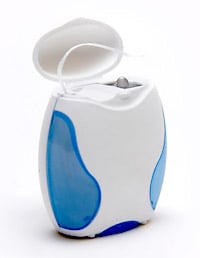Traditional Braces can be made of metal or ceramic (clear braces). They may be removable or they may be brackets bonded to the teeth. By placing a constant, gentle force in a carefully controlled direction, braces slowly move teeth to a corrected position. This is a great time to wear braces! Gone are the days when a metal band with a bracket was placed around each tooth. You can choose brackets that are clear or metallic color. You can choose the color of the ties that hold the wire in brackets. Wires are also less noticeable than they used to be and the latest materials move teeth faster with less discomfort to patients. You can even have the option of lingual braces (braces behind the teeth).
Braces for Children
It’s best for the children to start no earlier than age 7. The first permanent molars and incisors have usually come in by that time and crossbites, crowding, and other problems can be evaluated. When treatment is begun early, Dr. Rosales will be able to guide the growth of the jaw and incoming permanent teeth. Early treatment can also regulate the width of the upper and lower dental arches, gain space for permanent teeth, avoid the need for permanent tooth extractions, reduce likelihood of impacted permanent teeth, correct thumb-sucking, and eliminate abnormal swallowing or speech problems. In other words, early treatment can simplify later treatment.
Braces for Adults
Orthodontic treatment can be successful at any age and adults especially appreciate the benefits of a beautiful smile. One of every five patients in orthodontic treatment is over 21. Jaw surgery is more often required for adult orthodontic patients because their jaws are no longer growing. Adults also may have experienced some breakdown or loss of their teeth and bone that supports the teeth and may require periodontal treatment before, during, and/or after orthodontic treatment. Bone loss can also limit the amount and direction of tooth movement that is advisable.
Types of Braces
There are many types of braces, for today, we’re going to discuss 3 of the most popular ones for dental treatments.
Metal Braces
Traditional metal braces are the most common type of braces and are more comfortable today than ever before. Made of high-grade stainless steel, metal braces straighten your teeth using metal brackets and archwires. With metal braces, you have the option of adding colored elastics (rubber bands) for a more unique and colorful smile.
Ceramic Braces
Ceramic braces are made of clear materials and are therefore less visible on your teeth than metal braces. For this reason, ceramic braces are used mainly on older teenagers and adult patients who have cosmetic concerns. While they are visually less prominent, they do require more attention to oral hygiene as ceramic braces are larger and are more brittle than their metal counterparts. For these reasons, ceramic braces tend to be used more on upper front teeth than on lower teeth.
Gold Braces
Gold braces are stainless steel braces coated with 24 karat gold, and are popular with patients of all ages.
Treatment Time
Treatment time typically ranges from one to three years, depending on the growth of the patient’s mouth and face and the severity of the problem. Patients grow at different rates and will respond variously to orthodontic treatment, so the time to case completion may differ from the original estimate. The patient’s diligent use of any prescribed rubber bands or headgear is an important factor in achieving the most efficient treatment. Interceptive, or early treatment procedures, may take as few as six months.

